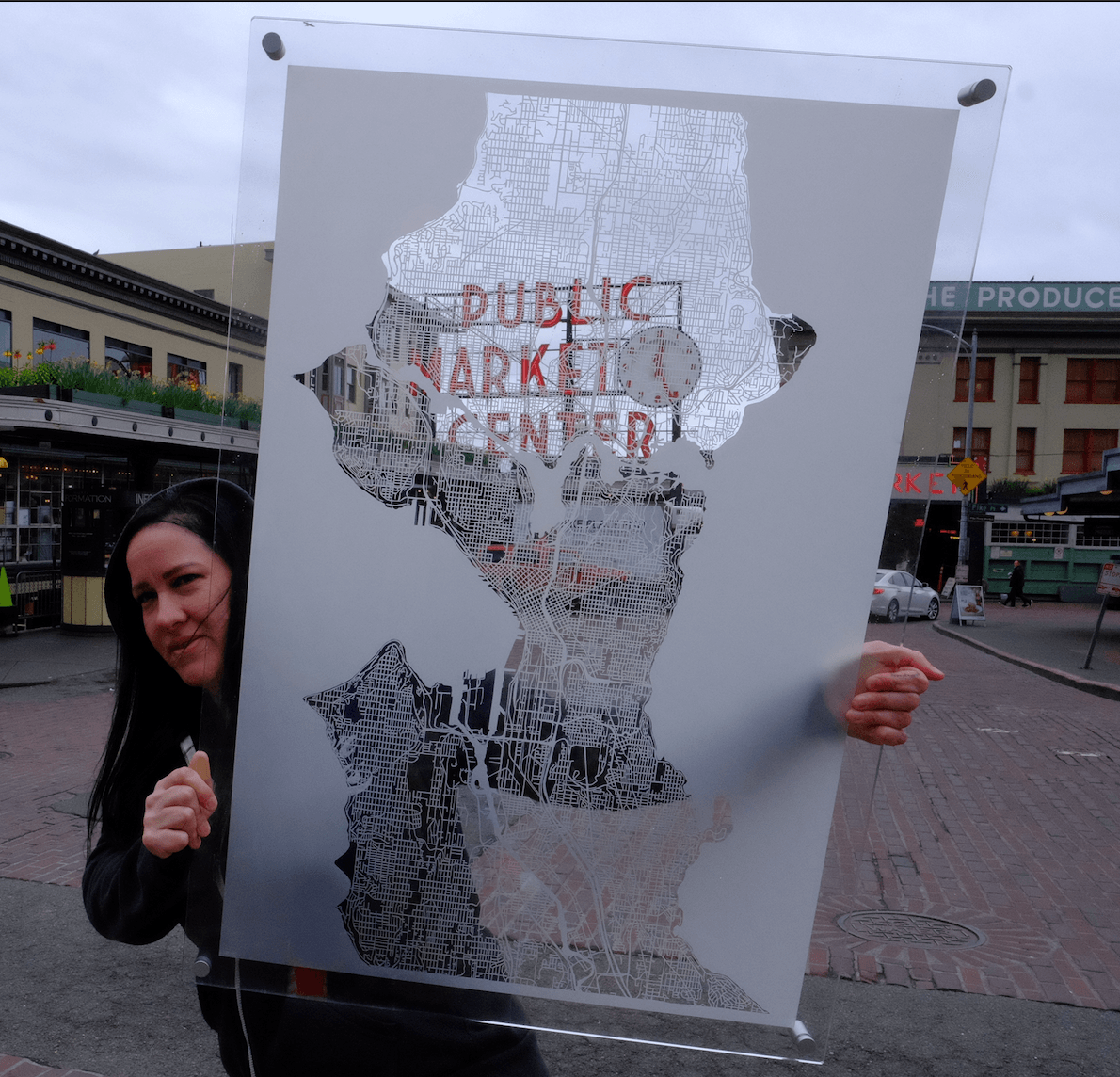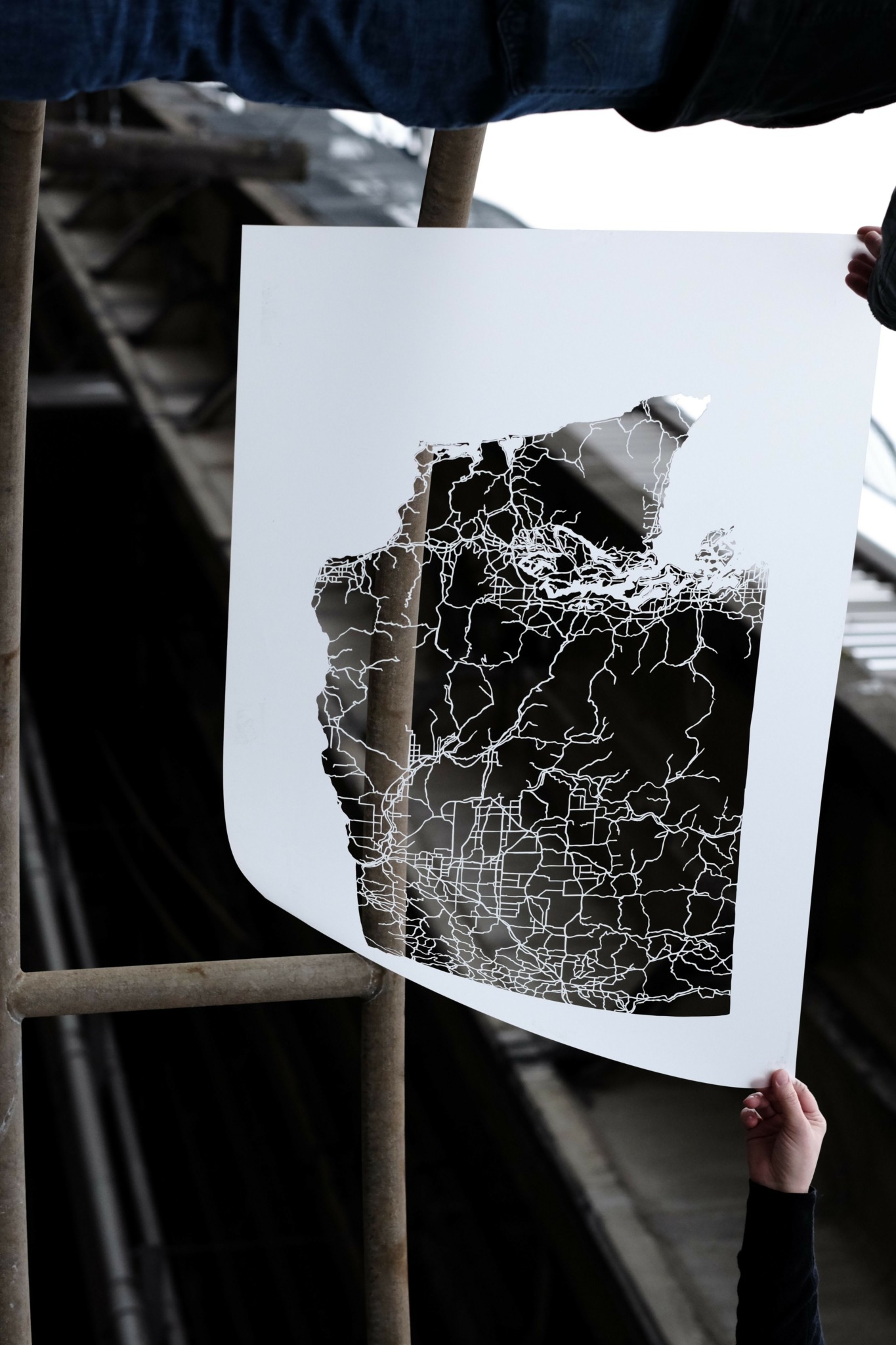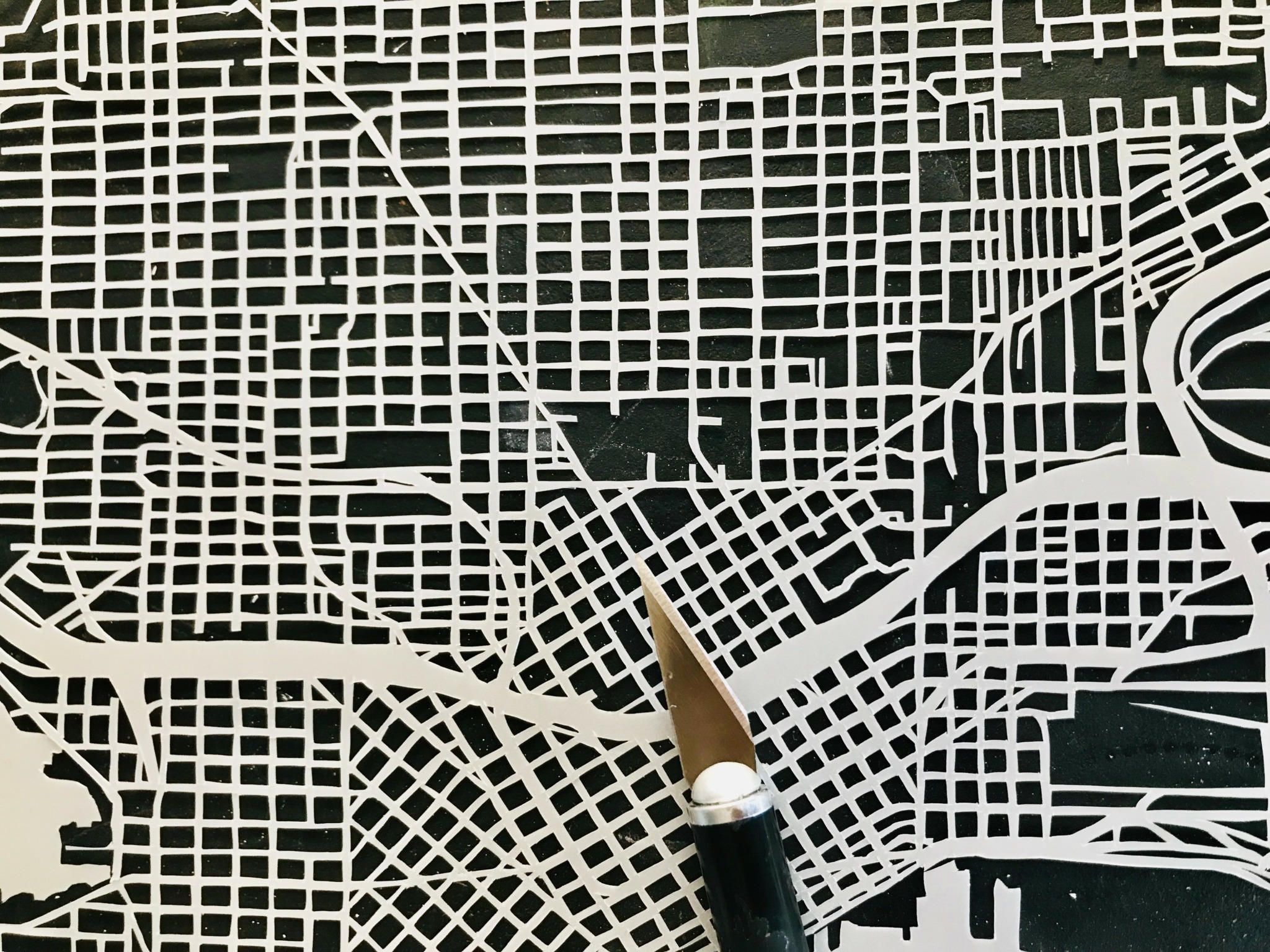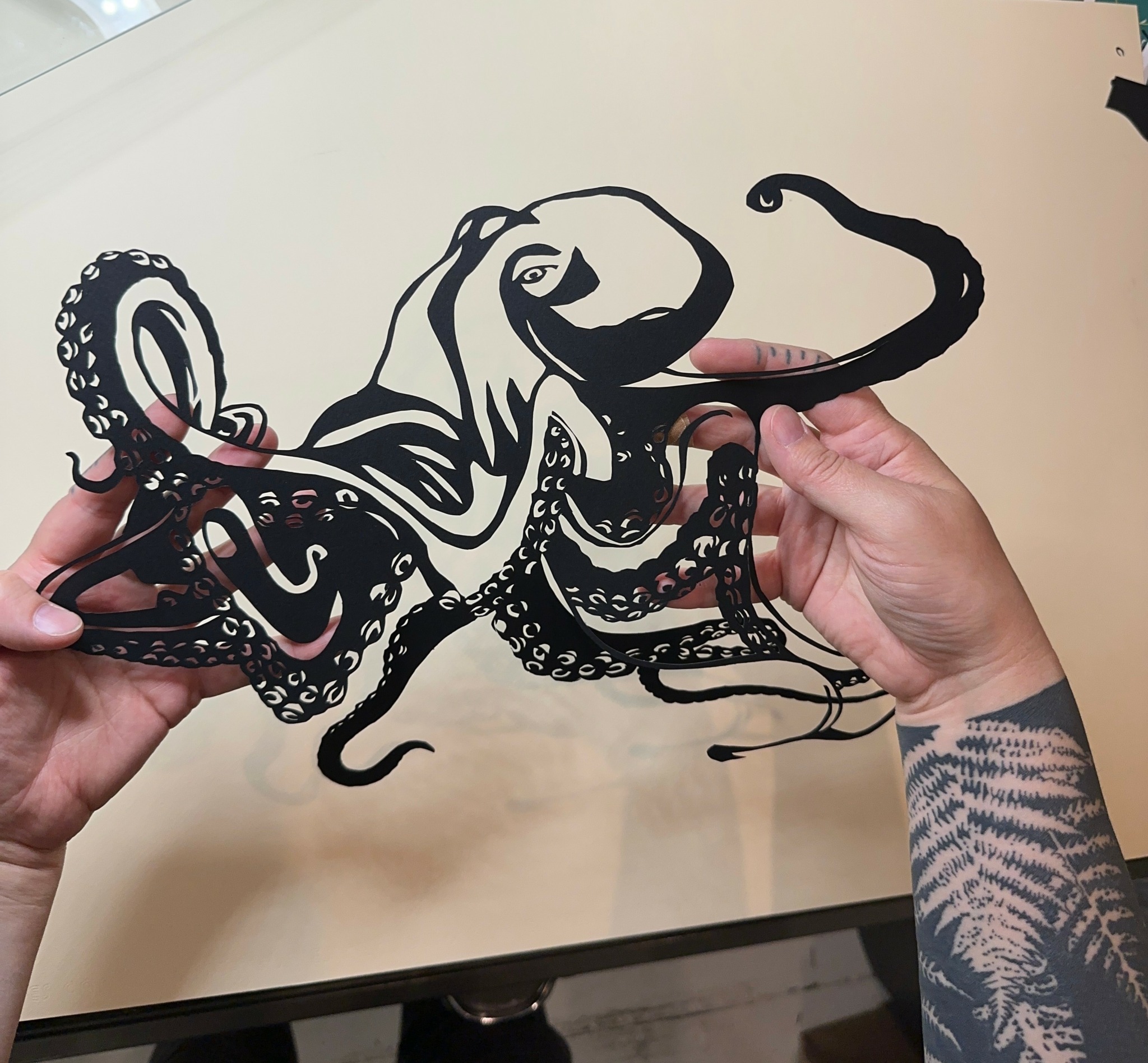We caught up with the brilliant and insightful GirlSpit X a few weeks ago and have shared our conversation below.
GirlSpit, thanks for joining us, excited to have you contributing your stories and insights. Can you talk to us about how you learned to do what you do?
I’m a self-taught stencil artist. I originally began creating stencils for street art. When I first started, my work was very much at a beginner’s level. In 2020, I decided to shift my focus and start showing professionally, which marked the beginning of my transition from street art to galleries. I began preparing for my first solo show, which was a pivotal step in redefining my artistic presentation.
Previously, my stencils were tools that I used to apply spray paint to walls or canvases. Now the stencil IS the final piece of art, carefully cut and framed to highlight the intricate details on paper.
My first solo show, titled “Straight Lines,” was a series of hand-cut maps depicting the City of Seattle from 1849 to 2017. When I started working on the series, my cutting process was painstakingly slow, about one square inch per hour. But as I progressed, my technique improved dramatically. By the end of the series, I could comfortably cut that same square inch in about 10 minutes. Someone once compared my process to an athlete practicing the same move thousands of times. It’s all about repetition and precision. I now have to change my blade about every 25 minutes just to keep up with the speed and accuracy of my cuts.
The biggest obstacle was simply time. It takes countless hours to build muscle memory and technique. I recently took about a 4 month break from creating paper cuts to prepare for my annual street art show. I found out that I have lost a lot of speed and accuracy and need to again, spend countless hours crafting my skill again.

As always, we appreciate you sharing your insights and we’ve got a few more questions for you, but before we get to all of that can you take a minute to introduce yourself and give our readers some of your back background and context?
I have always been artist since a very young age. I have never not created. I created my art name by combining the name of a fictitious graffiti artist, “Spit,” with the addition of the word, “girl.” I thought this was a clever way to combat the male dominated art scene.
I fell in love with cutting stencils. I enjoyed the process of cutting more than the application of spray painting them. But over time, I began to see the stencil itself as the artwork. That shift in perspective completely changed the way I approached my practice and ultimately led to my transition into showing work professionally in galleries across the Country. In 2 years I went from not showing at all, to showing at 28 different galleries across the Country.
In 2020, I started preparing for my first solo show, which became the catalyst for refining my process and elevating my presentation. Today, I create hand-cut, highly detailed stencils that are treated as finished pieces. A signature example is my series of historical maps of Seattle, which was on display in the Space Needle. My favorite aspect of that was observing people point out places they have been, where they have lived, and recalling memories tied to physical locations.
What sets me apart is that I don’t treat stencils as a means to an end, I treat them as the end themselves. Framing the stencil elevates a process that is usually hidden or discarded. It celebrates the labor behind the piece of art.
Beyond my own practice, I’m incredibly proud of the work I do to support and uplift other artists, particularly those who are self-taught or underrepresented. With a group of friends, we founded “Toys Not Included,” an annual group art show that provides a platform for emerging and independent artists to exhibit their work in a professional setting, many for the first time. Building and nurturing this community has been just as important to me as creating my own art. It’s about bridging gaps and creating space for voices that are often left out of the traditional gallery system.

What’s the most rewarding aspect of being a creative in your experience?
For me, the most rewarding part of being an artist is the opportunity to build community and help uplift other artists, especially those who are self-taught, emerging, or historically underrepresented. Creating art is fulfilling in itself, but what truly drives me is being able to create spaces where others feel seen, supported, and celebrated.
Through curating shows like Toys Not Included, I’ve been able to provide a platform for artists to share their work in a professional gallery setting. Watching someone gain confidence, connect with new audiences, and realize that their voice belongs in the art world is incredibly meaningful. That sense of shared growth and mutual support is what keeps me going. It’s not just about making art, it’s about making room for voices that have been shut out.

Is there something you think non-creatives will struggle to understand about your journey as a creative? Maybe you can provide some insight – you never know who might benefit from the enlightenment.
One thing I think non-creatives might not fully understand is just how cathartic and essential the creative process can be, especially for those of us who make art as a way to feel grounded. When I’m cutting paper, I’m not thinking about anything else. There’s no internal dialogue, no critical thinking, it’s just completely meditative. When the thoughts enter my mind is when I generally make mistakes because I am not focusing on the art. Creating the art keeps me fully in the present moment.
That kind of deep focus is rare in everyday life. It’s how I feel centered. People often assume art is about expression or aesthetics – but sometimes it’s really just about stillness and finding a moment of calm through repetitive, focused movement. Creating is how I stay in the present moment with a clear mind.
Contact Info:
- Website: https://www.girlspitart.com
- Instagram: girlspitart

Image Credits
All photos taken by GirlSpit


